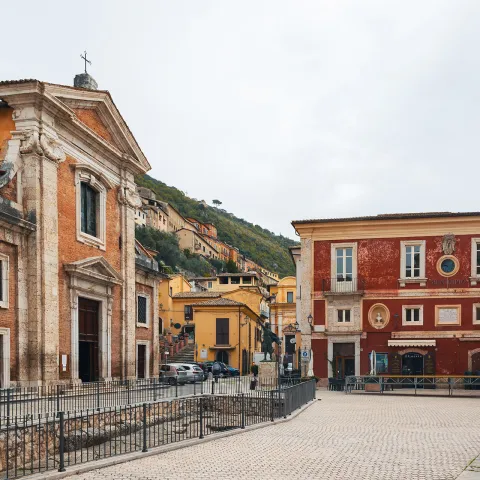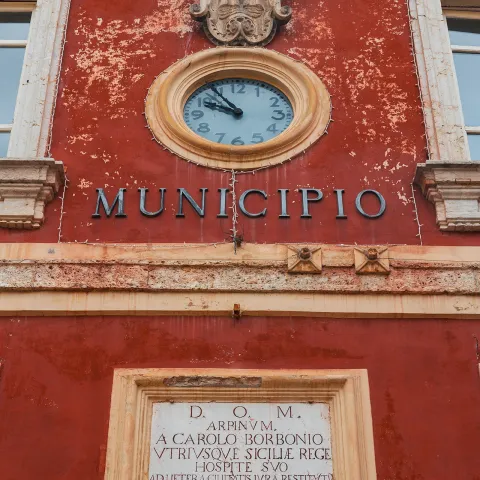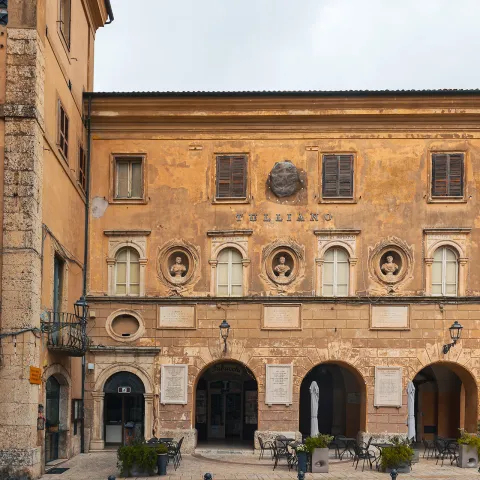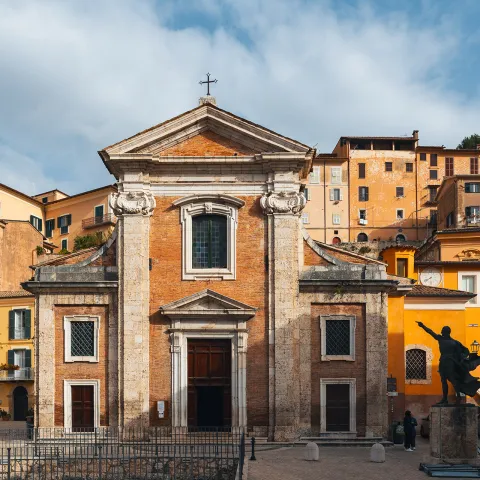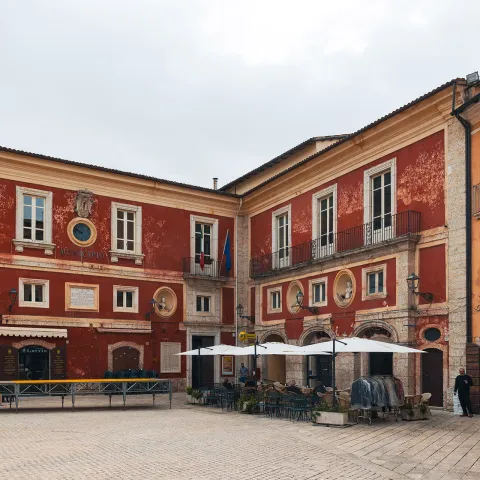Piazza Municipio
Piazza Municipio stands on the site of the ancient Roman forum, at the intersection of the main road axes: the decumanus and the cardo
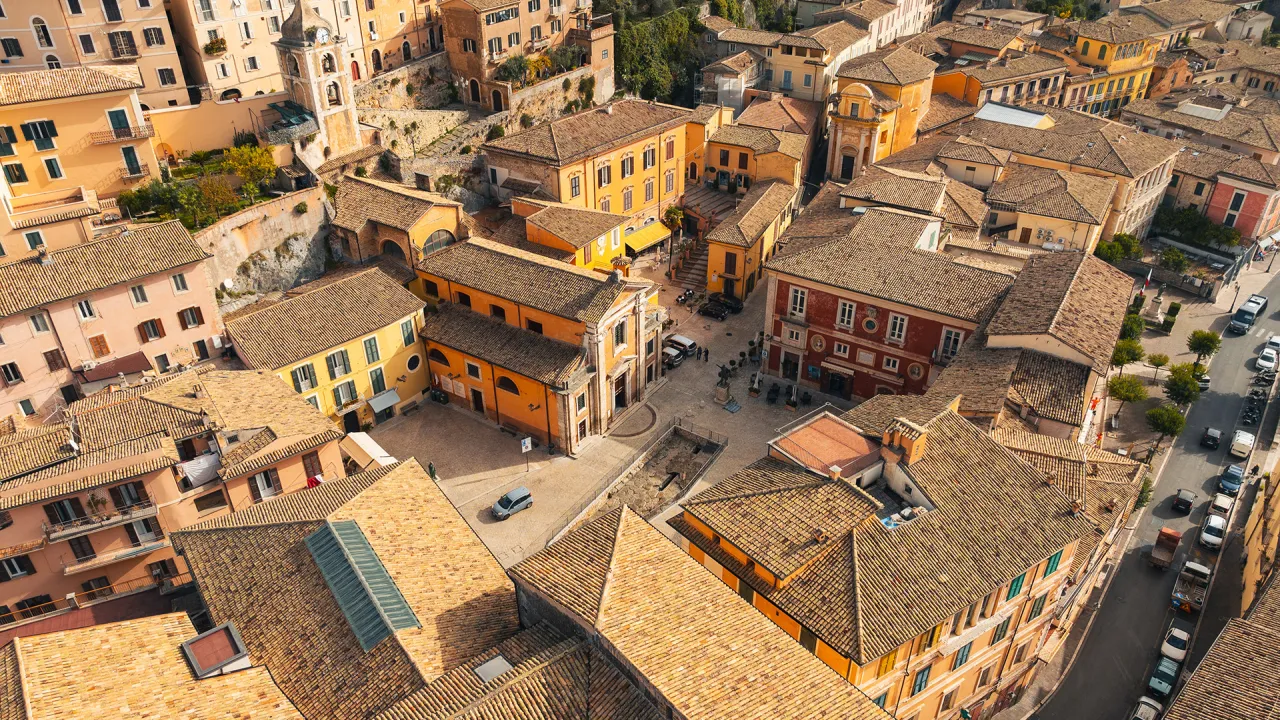
At the centre of the square, one can in fact see a section of the paving of the decumanus maximus, which followed the east-west axis of the city. Beneath it lies the cloaca maxima.
Once partially incorporated in the courtyard of Palazzo Boncompagni, the square owes its current layout and expansion to the period of French domination (1811–1814), when it adopted its present architectural and urban design, reclaiming its original role as the centre of city life.
In the square there are two statues: one of Cicero (1958), sculpted by Ferruccio Vecchi, and another of Caius Marius (1938). Dominating the background is Palazzo Tulliano, built in 1814 by Joachim Murat, King of Naples, as a school to educate younger generations in classical studies and at the same time, applied chemistry.
The architectural complex of Palazzo Boncompagni forms a right angle on one side of the square. The building's current appearance dates back to the early 19th century. On its left façade, which features two rows of windows, is the city's coat of arms. Below it, a Latin inscription dedicated to Charles III of Bourbon commemorates the sovereign’s contributions to the city. Flanking the inscription are the busts of Victor Emmanuel II and Giuseppe Garibaldi.
PHOTO GALLERY

VIDEO



